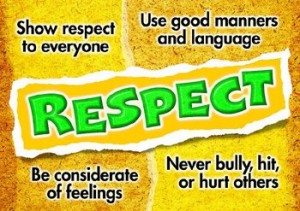
Thanksgiving is a perfect opportunity for getting young people to reflect on everything they have, particularly on a global scale.
This week’s youth work session plan idea therefore has some Thanksgiving activities for students to get them thinking about money, family, friends, freedom, possessions and anything else that they might take for granted. These ideas can be used no matter what size your youth group is or could also be used in a school lesson.
Thanksgiving Activity 1
Give each of the students a stack of post-it notes and a pen. Ask them to write down things that they’re thankful for, with one thing on each post-it. n.b. Don’t offer any suggestions of things they should be thankful for at this stage.
After about 5-10 minutes, get all the young people to stick the answers they have on a wall.
Thanksgiving Activity 2
Once they’ve stuck their post-it notes up, have the students watch a video that focuses on poverty around the world. There are all kinds of videos you could use – full-length movies, documentaries, charity appeals, etc.
Another option would be to use the two videos below. They’re both about 4 minutes long, but should get them thinking about how fortunate they are compared to billions of other people. (Thanks to Terry Linhart who’d brought the videos to my attention via Ken Castor’s blog).
Thanksgiving Activity 3
After they’ve watched whatever video you’ve chosen to use, repeat the first activity – have the students write down anything else they can think of that they’re thankful for. There’s a good chance that the video will prompt a number of additional answers.
Thanksgiving Activity 4
There should now be many different answers stuck to the wall. Read some (or all) of them out and discuss with the students why they’re thankful for all these things.
Thanksgiving Activity 5
The previous four activities should have helped your young people realize that they have a lot they can be thankful for, especially compared to other people around the world.
If the youth are feeling empathetic towards those who are less fortunate than they are, discuss ways in which they can do something to make a difference. This could include:
- Taking part in a 30 Hour Famine
- Organizing a youth group fundraiser, where the proceeds are given to a charity
- Planning a Slum Survivor weekend retreat
- Identifying ways they can volunteer in the local community
- Setting up their own charity or non-profit that addresses a cause that they’re passionate about
Question: Do you have any other ideas of good Thanksgiving activities for students? We’d love to hear your thoughts in the comments below
You can also connect with us by:
- Signing up to receive our posts via email
- Following us on Twitter
- Liking us on Facebook
- Signing up to our RSS feed
 Physical abuse. Pregnancy. Suicide. Death.
Physical abuse. Pregnancy. Suicide. Death. Q: OK, so I work with
Q: OK, so I work with  Q: I’ve heard this term used about quite a lot of young people, but what does “at risk youth” mean?
Q: I’ve heard this term used about quite a lot of young people, but what does “at risk youth” mean?